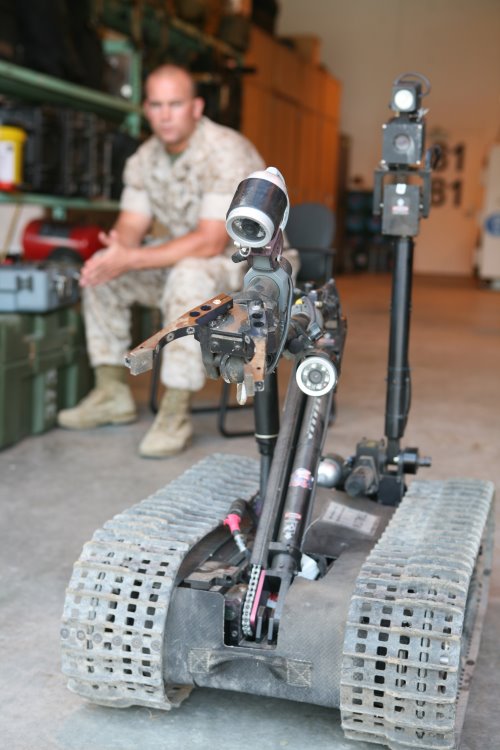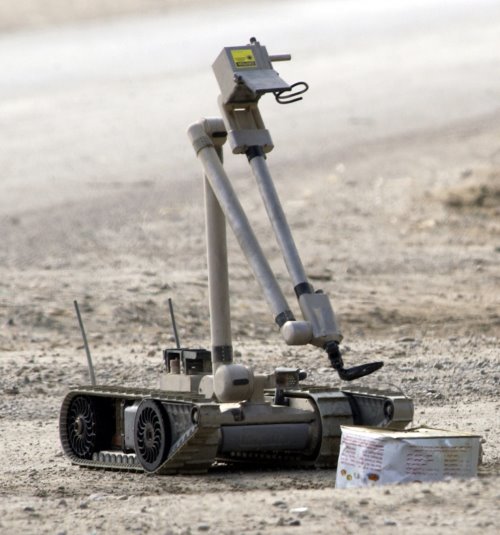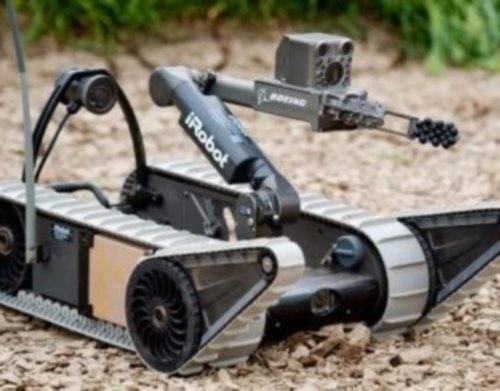We use robots to do plenty of jobs that we don’t want to do. Even the military uses robots in tasks that are dangerous for humans. So, how attached can one become to a robot that works with them?
One University of Washington student, Julie Carpenter, just received her doctorate in education after writing her dissertation about the relationship between soldiers and their robots.

Sgt. Mike Sadowski with an EOD robot used to identify, dispose of, and detonate explosives.
(Photo by Lcpl Zachary L. Majors, 3rd Marine Aircraft Wing)
In her research, she conducted interviews with 23 Explosive Ordinance Personnel from all over the United States and from every branch of the military.
The Explosive Ordinance Personnel comprises highly skilled soldiers whose main skills include defusing chemical, biological, and radiological nuclear weapons, and roadside bombs. More recently, the group trains robots to disarm explosives and carry out the rest of these potentially risky situations.
Carpenter was looking to discover the relationship these soldiers had with their robots and if those relationships could potentially affect their decision-making ability and mission outcomes.
So, how does a soldier feel when his or her robot gets blown up? Could an event like this possibly evoke feelings similar to that of losing a fellow soldier?

An explosive ordinance disposal robot pulls wires from a suspected explosive device. (U.S. Navy photo via Journalist 1st Class Jeremy L. Wood)
What Carpenter found in her research was that the dynamic of their relationship changes as the robot technology advances.
The soldiers in her study reported that when a robot was destroyed in combat, they did feel emotions like frustration, anger, and even sadness.
They were so connected to the robots that they could even tell who was controlling it based on how it moved. They often felt frustrated by the technical limitations of their robotic companions.
Carpenter also found that soldiers named their robots, painted the name on the side of the robot’s face, and even went as far as to have funerals for the “poor little guys” (as some soldiers described them).
Why use robots anyway?
Robots are, in fact, robotic, and therefore viewed as the best candidate for carrying out some dangerous operations, since robots don’t have emotions that can interfere with completing a task. They detect, inspect, and even disarm explosive devices and thereby reduce the need to put human lives in harm’s way.

Explosive Ordnance Disposal uses Small Unmanned Ground Vehicles. (Image via Armed Forces International)
Currently, the military does not use robots that look like humans or animals, but the military is moving toward new kinds of roots that would be more humanlike so that they could be more agile, for example, having the ability to climb stairs.
So, the question arises, would having robots that look more like humans or animals evoke even more emotions from military personnel?
We’ll have to wait and see.
In the meantime, tell us what you think below.
Story via University of Washington.
Advertisement
Learn more about Electronic Products Magazine





